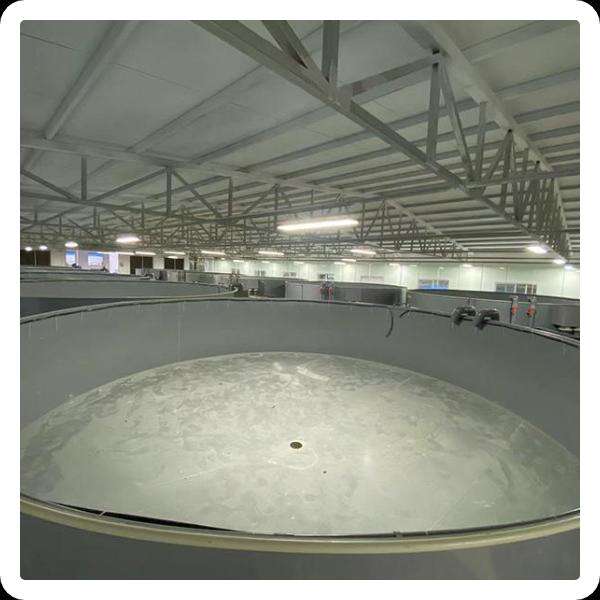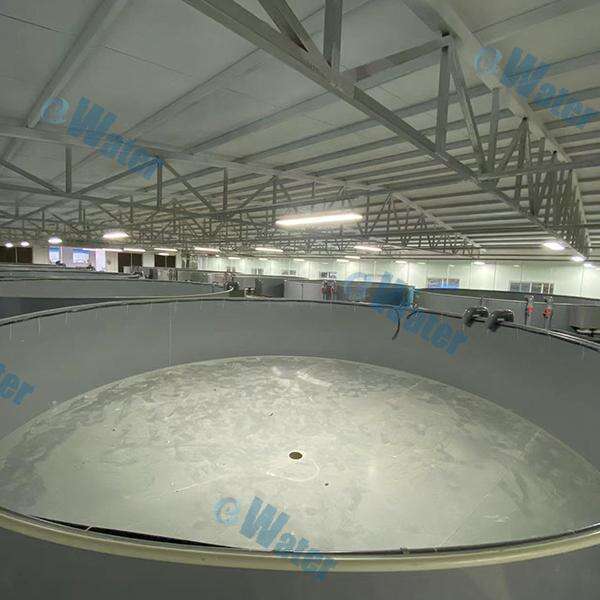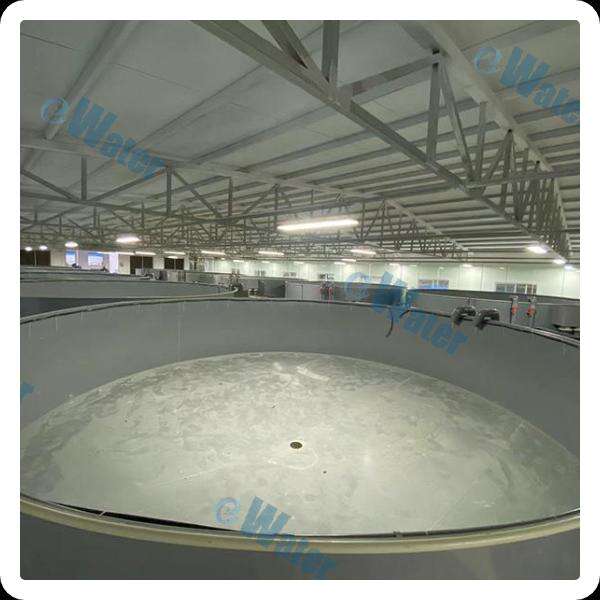Риба для здоров'я майбутнього (за допомогою аквакультури)
:)Аквакультура — це ведення сільського господарства води. Вона стосується виховання великої кількості видів тварин, включаючи рибу та інших водних тварин, таких як крихтонари, молюски тощо. Цей метод є важливим у створенні продукту з високим вмістом білка для харчування великої кількості людей. Тип аквакультури, який є більш цікавим порівняно з іншим, називається системою переробки аквакультури (RAS) — виховання риби. Можливо, ви не знаєте, що означає ця фраза і чому вона має тут бути. Ми краще зрозуміємо переваги, заходи безпеки, їх застосування та як це тривало з точки зору виховання риби у системах RAS.
Переваги виховання риби у системах RAS
Система рециркуляційного виховання риб (RAS) - це метод, який дозволяє виховувати рибу в басейнах умови які найбільш наближені до природних, використовуючи сучасну технологію. Метод, що базується на переробці та очищенні води для створення правильного середовища для риби. Які переваги RAS порівняно з традиційним вихованням риби? По-перше, риба буде високої якості та фізично здоровий завдяки тому, що це замкнута система. Оскільки рибу захищено від паразитарних чи бактеріальних хвороб, нападів хижих тварин, а також зменшена використання води, це метод є екологічно супроводнений.
Виробництво риби за допомогою РАS дивовижне тим, як воно може імітувати природу, одночасно повністю контролюючись, і тому ми вважаємо, що якщо це зроблено правильно, то РАS має великий потенціал. Високотехнологічна система РАS дозволяє операторам керувати якістю води, температурою, вмістом кисню та іншими такими чинниками для того, щоб забезпечити активний рост риби. Крім того, технологія РАS дозволяє вести виробництво риби протягом всього року, навпаки до традиційного способу, де рост обмежується сезонними змінами та погодними умовами.

Реалізований як покращення традиційних рибальських ферм, які витратили мільярди доларів на антибіотики та хімічні засоби для боротьби з хворобами та паразитами, системи замкненого водоспаду (RAS) у рибальському господарстві поєднують біологічну фільтрацію з УФ-іррадіацією для контролю якості води та підтримання безхворобної середовищи. Ця екологічно орієнтована практика дає можливість отримувати прósперуючих риб, що володіють високою стійкістю до хвороб, що зменшує необхідність застосування хімічних засобів, де антибіотики потрапляють до вашої дієти. Зазначимо, що ферми RAS уникують ризиків втечі риб у дикі популяції, що можуть завадити цілісним екосистемам.
Використання ферм RAS для виховання риб
Це гнучка система, яку можна використовувати для виховання різних видів риб — наприклад, салмона, форелі, тилапії або барамунді. П: Які види риби можна вирощувати в системах рециркуляційного аквакультурного виробництва? Вона використовується для кількох цілей, включаючи виробництво риби для свіжих та заморожених ринків до виховання декоративної риби. Гнучкість цієї технології дозволяє виховувати різних водяних створінь, таких як креветки та раки.
Як використовувати фермерське виробництво RAS
Виробництво риби RAS здійснюється шляхом поєднання різних фільтрів, біологічних реакторів та установок УФ-облучення, що дозволяють потік живлення проходити через ці різні простори, встановлюючи систему замкнутого циклу. Новий заголовок: Це останній раз, коли я цього скажу... у будь-якому випадку, всі види інтелектуальних пристроїв забезпечують високу якість води та екологічні умови, які ідеальні для риби, але також вимагають постійного моніторингу та управління. Виробництво риби RAS може бути організоване від маломасштабних до великого масштабу ферм, залежно від потреб фермера.

Для експлуатації системи розведення риби RAS потрібні технічні знання, які вимагають спеціальних навичок та досвіду для правильного керування її роботою. Партнерство з надійними постачальниками для обслуговування та підтримки також є важливим. Крім того, необхідно проводити контроль якості, щоб забезпечити те, що риба є здоровою, безпечною для споживання людьми і відповідає найвищим стандартам. Це включає регулярні аналізи води, правильне управління кормленням та захист від хвороб.
Як використовується розведення риби RAS?
Щаслива новина полягає в тому, що розведення риби RAS має багато застосувань - від виробництва їжі до наукових досліджень та збереження біоресурсів. Воно є основним постачальником свіжої та замороженої риби, а також використовується для вирощування декоративної риби. Ця галузь є важливою промисловістю. Також технологія RAS дозволяє проводити місячний виробничий цикл, що означає, що рибу завжди можна пропонувати на ринку. Крім того, технологія RAS може бути інструментом для аналізу поведінки та фізіології риби та участі у збереженні загрожених видів.

Виховання риби за допомогою системи рециркуляційного аквакультурного виробництва (RAS) — це ефективний, захисний і сучасний спосіб виховання риби. Її перевагами є висока якість і здоров'я вирощеної риби, мінімальна втрата води, виробництво протягом 365 днів тощо. Аквакультурне виховання риби RAS використовує передові технології для забезпечення якості води та неболісного оточення, щоб споживачі могли насолоджуватися безпечним, свіжим і здоровим фермерським рибним продуктом. Початок та підтримка фермерської ферми RAS супроводжується своїм унікальним набором викликів, але покупка в надійних постачальників, у kombінації з заходами контрольної якості, призведе до успішних результатів.
надішлеє інженерів для допомоги у монтажі та кваліфікації на місці. Дизайн системи рекольцевого аквакультурного виховання риби з детальними друками для зарубіжних клієнтів, щоб забезпечити підготовку будівлі та розробку практичного графіку, який включає терміни та вимоги до праці перед монтажем.
eWater непреривно шукає інноваційні стратегії RAS для зниження енергоспоживання та продуктивності системи рекольцевого аквакультурного виховання риби. Ми змогли доставити 400 RAS по всьому світу до вересня 2022 року.
eWater виготовляє обладнання для ферм рибного господарства з системою рециклівної аквакультури RAS. Ми розробили 3-те покоління валкових фільтрів, 2-ге покоління пеноскидників, 3-те покоління систем нащадування кисню 2018. Ми надаємо гарантію 3 роки, присвячені забезпеченню високоякісних продуктів, тривалої гарантії та технічної підтримки. З 2016 року ми сертифіковані ISO/CE.
eWater є постачальником систем рециклівної аквакультури для рибних ферм, спеціалізується на системах рециклівної аквакультури, працює з нашими клієнтами, щоб знайти найкраще рішення для їхнього запиту.
Наша професійна команда з продажу чекає на вашу консультацію.